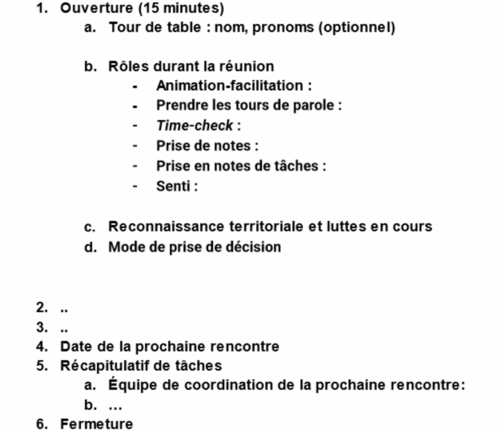Modified consensus decision making 101
The following resource describes a consensus-type decision-making model that centres active listening and teamwork. It can been applied in the context of large and complex issues and decisions to be resolved or decided on.
Where does this model come from?
The creation of this model was inspired by positive decision-making experiences within Extinction Rebellion as well as the struggles of Fairy Creek, the Local Services Committee of Southwestern Quebec, the formal consensus model developed by CT Lawrence Butler and Amy Rothstein and the community of student associations in Quebec, and Pt'chang.
When to use this model?
If you are more than 15 people or a small group made up of people who do not know each other or very little. For large groups, it is possible to apply this model with delegates rather than with each person in each group.
What to prepare in advance?
Before a meeting during which you would like to use this model, determine 2 people responsible for coordination. Their main task will be to find a facilitator (person not participating in the discussions, responsible for stating common intentions), prepare an agenda and share it with the large group for additions.
How to do modified consensus decision making
1. Presentation of a prepared agenda
The agenda should include:
- the roles to be fulfilled for the meeting (facilitation, responsible for time, responsible for speaking turns, taking notes, taking notes of tasks)
- the time given to each point
- a point used to organize the next meeting / establish its date
Here is a basic sample agenda.
